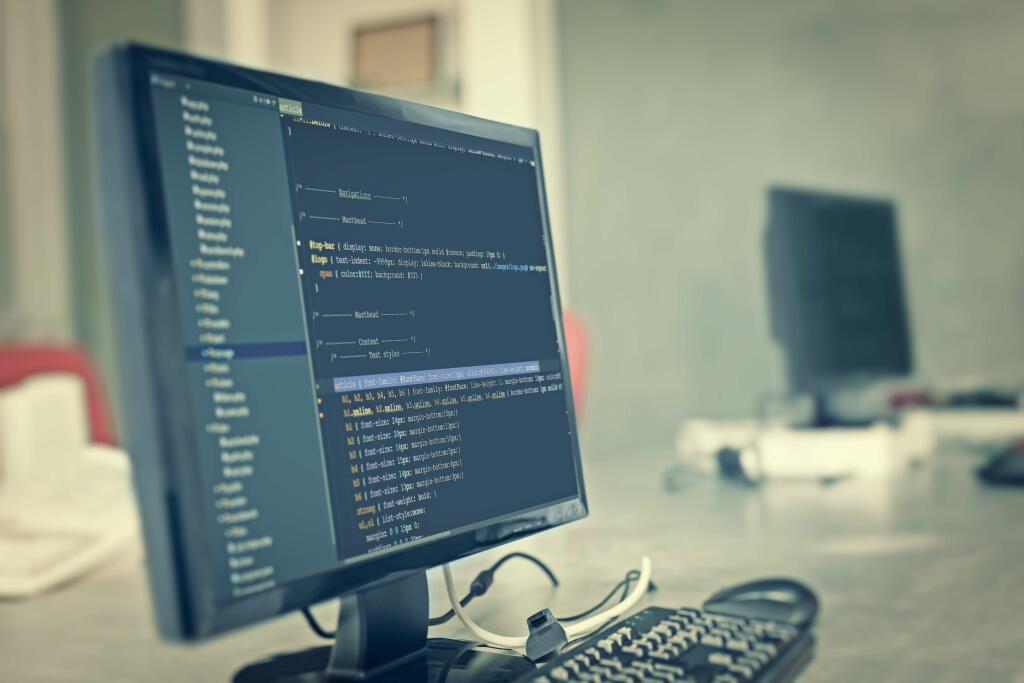AR is invaluable for navigation applications within spatial computing, providing visual cues and directions overlaid on the true world, simplifying complex environmental navigation templin2022using . Navigating the regulatory panorama for spatial computing presents a multi-faceted problem, encompassing not simply authorized but additionally technical complexities. The amalgamation of these factors creates a convoluted regulatory surroundings that necessitates a balanced, data-driven method to foster innovation whereas making certain public security and ethical compliance. Navigating the regulatory panorama for spatial computing entails addressing the absence of universal requirements and privateness issues. One potential resolution is to determine a consortium of authorized, technical, and coverage consultants to develop a comprehensive framework.
- In the close to future, technicians may doubtlessly control robotic avatars remotely to carry out duties, signaling a leap in path of unprecedented effectivity and convenience.
- While spatial computing includes quite so much of ideas, from natural language processing to deep neural networks, its core focus is empowering human/computer interactions.
- Tourists need real-time information, which could be significantly crucial during peak seasons or events, to optimize their experiences.
- Immerse your self in 3D environments and expertise gaming worlds as though you’re truly in them.
- Here’s a video of us playing around with a mixed-reality instrument designed and created by Lucas.
- Project Florence is a creative representation of a plant-human interface experience that challenges the conventional notions of communication and interaction with the pure world.
In my time at AWS I have discovered that this is a firm of builders and my staff believes whole-heartedly that we should innovate and invent on behalf of our customers. Many folks have heard that AWS’ number one leadership precept is “Customer Obsession” and I can verify this to be true. It is well-known that “90% of what we build at AWS is pushed by what clients tell us matters to them,” as is stated in this article, The Imperatives of Customer-Centric Innovation. My colleagues and I are working toward creating the constructing blocks, tools, and examples which empower our customers to build, ship and handle spatial experiences at scale on AWS.
1 Enabling Applied Sciences Of Spatial Computing
This is achieved through the use of advanced show know-how, cameras and sensors to scan the environment, several sorts of person inputs, and graphical rendering capabilities. Spatial computing plays a pivotal position in selling the seamless integration of the digital and physical realms, hence establishing a seamless interplay between these two domains. This evaluate provides an in-depth evaluation of spatial computing and its enabling applied sciences.
Thus, spatial computing can reshape the gaming and entertainment panorama by enhancing content material creation, storytelling, social interplay, merchandise integration, and immersive spectator experiences. Spatial computing can provide many benefits in training by utilizing applied sciences corresponding to VR, AR, MR, and holographic computing. It can be utilized to develop immersive studying environments, permitting college students to expertise virtual simulations and historical contexts, resulting in enhanced understanding and engagement. Virtual object manipulation can permit sensible experiences and hands-on studying, which may be difficult in real-life environments.
What’s The Distinction Between Spatial Computing, Extended Reality (xr) And Immersive Technologies?
One of the defining traits of spatial computing is that the person interface just isn’t confined throughout the two-dimensional limitations of a computer display. These include digital or graphical components that are overlaid within the physical setting or inputs that respond to environmental cues. This immersive and 3D user interface also translates to a extra engaged consumer experience as a end result of the interaction between the person and the pc system is more pure and versatile.

These case research illustrate how spatial computing is pushing the boundaries of commercial design, providing new instruments and prospects for innovation and effectivity. As spatial computing technology continues to evolve, it promises to reshape the way we design and interact with our bodily world. However, a brand new solution emerges with distant rendering, which allows the heavy processing of rendering to be processed in the cloud after which streamed to the system. This strategy offers the potential to combine the high-end graphics of PCVR systems with the portability of standalone headsets. Prominent gamers providing solutions on this space embrace Nvidia with their Cloud XR answer, Microsoft with Azure Remote Rendering, and Holo-Light with ISAR SDK. Eye and face tracking are different important spatial computing elements integrated in the Quest Pro.
Meta Codec Avatars: Digital Meetings
Based on writer John Hull’s recordings about dropping his sight, this Virtual Reality experience immerses the viewer in a post-vision world. The experience showcases how Virtual Reality excels as a model new medium for communicating empathy. Industries are experiencing profound transformation through the deployment of digital training. Studies performed inside a number of industries reveal exceptional efficiency enhancements in digital coaching compared to traditional training methodologies. For distant teams, leveraging presence within the digital world helps to bridge the inventive hole that 2D video simply can’t fulfill.
An experiment carried out by Soyoung Jung et al. aimed to judge the impact of spatial embodiment in augmented reality on medical attitudes in direction of the self. In this research, the presence was proven by way of a variety of units, such as a two-dimensional screen, a three-dimensional dummy, and the participant’s personal bodies. They watched commercials that confirmed virtual footage of foetuses and X-rays of the lungs. When the dual mannequin process is mediated by the spatial presence, it raises antagonistic attitudes in direction of smoking that improve the behavioural intention of participants to engage with the marketing campaign jung2019augmented .

Tracking techniques have a important position in spatial computing, facilitating smooth user interactions with digital content throughout the physical environment plopski2023tracking . These methods are essential for precisely positioning virtual objects, deciphering https://www.globalcloudteam.com/spatial-computing-the-complete-guide/ consumer actions, and making certain an immersive expertise. Inside-out tracking whitmire2019aura is usually used in VR headsets and AR glasses to observe the user’s motion and environment through integrated cameras and sensors.
Concurrently, the R1 chip processes enter from the cameras, sensors, and microphones, streaming photographs to the shows inside 12 milliseconds, thereby offering a nearly lag-free, real-time view of the world. IKEA Kreativ is an AI-powered app that allows users to design their own rooms with IKEA merchandise. The app makes use of a mixture of digital reality, spatial computing, machine learning, and 3D-mixed-reality technologies to create realistic and interactive 3D replicas of users’ spaces. They also can add new furniture and equipment from the IKEA catalog or explore pre-furnished rooms for inspiration.
Spatial computing has the potential to revolutionize the manufacturing industry by fusing the physical and digital realms. With AR and VR, manufacturers can create digital twins of their merchandise and processes that present real-time simulations for production lines and meeting processes. Moreover, buyer engagement and innovation may be enhanced with collaborative design, customization, and personalized experiences.
Industrial Design
This aligns with recent developments in neural networks, rendering a hardware depth sensor potentially redundant for high-quality hand tracking. The initial era offered a slim and square FoV, centered throughout the user’s sightline. Although the second iteration expanded the FoV barely, it still fell brief compared to competitors just like the Quest 2. This restrictive FoV may result in a less immersive experience because the digital overlays didn’t cowl the user’s complete visible subject.
Going ahead, spatial computing will provide the instruments companies need to leverage more information, automate essential capabilities, and connect the dots between humans and computer methods. Microsoft has explored the world of spatial computing with Microsoft Mesh, the HoloLens headset, and even immersive experiences for Microsoft Teams. Elsewhere, Meta is investing in spatial technologies to bring life to its imaginative and prescient of the metaverse. The company continually explores new merchandise and options to make office interactions extra immersive.
Spatial computing describes digital experiences that incorporate real-world locations and objects, typically taking the form of augmented actuality, combined reality or virtual reality that references real-world locations. A headset is a chunk of hardware that slips over your eyes and is held in place by a band or straps across the back of your head. Your view modifications as motion sensors detect where you’re wanting whenever you move your head or change instructions.

Our objective is to deliver the most correct data and the most knowledgeable recommendation attainable so as to help you make smarter buying decisions on tech gear and a broad selection of services. Our editors thoroughly review and fact-check each article to guarantee that our content meets the very best requirements. If we have made an error or revealed deceptive info, we’ll right or clarify the article. Find and examine business software program insights to extend effectivity, streamline operations, enhance collaboration, reduce prices, and grow your small business.
Have you ever wanted to see how a piece of furnishings would look in your house before purchasing it? With IKEA Place, customers can place digital furniture in their precise area, ensuring it harmonizes seamlessly with their decor. The use case for residence design has developed from mobile AR technologies to head-mounted show instruments, permitting interior design and furniture companies to showcase the final outcomes to purchasers before making a purchase.

Instead of confining digital experiences to two-dimensional screens, it brings a extra immersive pc interface and a new method of interacting with technology. The project also permits the plant to answer the human person by generating textual content output based on the plant’s signals and data. The cloud service makes use of natural language generation strategies to create sentences that mirror the plant’s state and preferences. The project thus creates a two-way conversational experience between the plant and the human user.
Sensor Fusion and AR throughout the realm of spatial computing present intricate challenges that demand meticulous consideration. The fusion of knowledge from various sensors, similar to cameras, accelerometers, and gyroscopes, can lead to complexities in synchronizing and harmonizing information accurately. Discrepancies in sensor accuracy and calibration introduce challenges in reaching precise spatial alignment, impacting the fidelity of AR overlays. Additionally, real-time processing calls for for seamless AR experiences require environment friendly algorithms for sensor information fusion, which might strain computational resources. To handle these challenges, a strategic resolution involves implementing sensor fusion algorithms with adaptive filtering techniques, corresponding to Kalman filters, to reinforce accuracy and synchronization. Leveraging edge computing for on-device processing can alleviate computational burdens, optimizing real-time performance.
For one, pixel density is necessary for any device that’s held up close or worn as a headset, as lower resolutions increase eye strain and break immersion. Games like Pokémon Go and its predecessor, Ingress, use GPS and augmented actuality know-how to create gaming experiences which may be specific to the user’s location and incorporate aspects of the surrounding setting. Given the current advances in spatial computing, it appears doubtless that we’ll see a wider vary of video games that make use of the know-how in novel methods in years to come back.